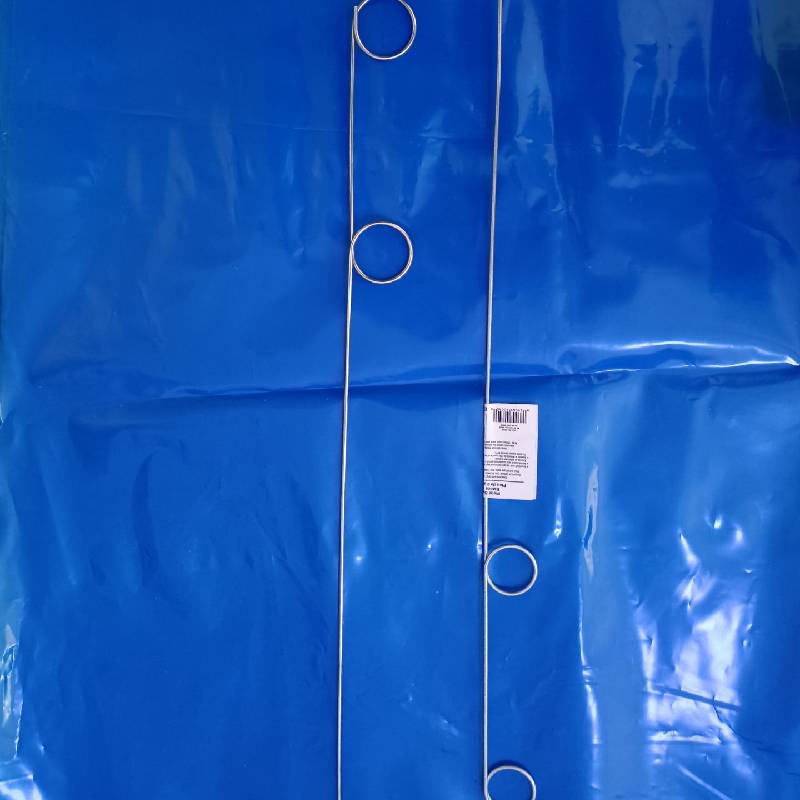
- Mobile Phone
- +8613931874955
- sales@cntcmetal.com
metal wire grid
The Applications and Innovations of Metal Wire Grids
Metal wire grids have increasingly become significant components in various fields, owing to their diverse applications and functional capabilities. These structurally robust frameworks, composed of intersecting metallic wires, serve a variety of purposes ranging from architectural support systems to advanced technological interfaces. In this article, we will explore the characteristics, advantages, and evolving applications of metal wire grids.
Characteristics of Metal Wire Grids
Metal wire grids are typically made from materials such as stainless steel, aluminum, or copper, which provides them with excellent durability and strength. The spacing and thickness of the wires can be tailored according to specific requirements, allowing for a wide range of design possibilities. Furthermore, these grids can be treated or coated to enhance their resistance to environmental factors like corrosion, ensuring longevity and reliability.
One notable characteristic of metal wire grids is their lightweight nature combined with high tensile strength. This trait makes them ideal for applications where heavy structures are impractical. They can also be engineered to feature various patterns and geometries, offering aesthetic appeal along with functionality.
Advantages of Metal Wire Grids
The advantages of metal wire grids extend across multiple dimensions
. Firstly, their ability to distribute loads evenly makes them suitable for structural applications. In construction, they can serve as reinforcements in concrete, enhancing the strength of slabs, ceilings, and walls. This results in lighter structures that do not compromise on stability.Moreover, metal wire grids are highly versatile. They can be incorporated into different systems, such as filtration and separation, where they act as sieves for various sizes and types of materials. In the realm of electronics, fine metal wire grids are pivotal in the production of screens and sensors. Their ability to transmit signals effectively, while maintaining structural integrity, positions them as essential components in the advancement of technology.
metal wire grid

Another aspect to consider is the eco-friendliness of metal grids. Unlike many synthetic materials, metals can be recycled repeatedly without a loss of properties. This attribute aligns with the growing global emphasis on sustainability and environmental consciousness in the manufacturing and construction sectors.
Evolving Applications
As technology advances, the applications of metal wire grids continue to expand. One exciting trend is in the field of renewable energy. In solar panel manufacturing, metal wire grids are utilized to create conductive paths for electricity flow, crucial for enhancing efficiency in solar energy capture and conversion.
Additionally, in architecture and interior design, metal wire grids have emerged as stylish elements. They are used in facades and interior dividers to create striking visual effects while allowing light and air to pass through freely. The combination of functionality and aesthetics has made metal wire grids a popular choice among modern architects.
The field of telecommunications also benefits from innovations involving metal wire grids. With the increasing demand for high-speed internet and wireless communication, these grids are being used in antennae and other transmission devices, ensuring the efficient transfer of data across vast distances.
Conclusion
In summary, metal wire grids represent a fusion of practicality, versatility, and innovation across multiple industries. Their unique characteristics and benefits make them indispensable in construction, technology, and design. As we continue to innovate and adapt our approaches to various challenges, the role of metal wire grids will undoubtedly expand, paving the way for groundbreaking applications in the future. The continuous exploration of their potential ensures that metal wire grids will remain at the forefront of engineering and manufacturing advancements for years to come.
share:
-
Your Source for Concrete Wall Ties and Masonry AccessoriesNewsJul.10,2025
-
Unlocking the Power of Iron Wire for Every ProjectNewsJul.10,2025
-
Explore Advanced Chain Wire and Stainless Steel Mesh FencingNewsJul.10,2025
-
Discover the Benefits of Annealed Wire ProductsNewsJul.10,2025
-
Discover China Stainless Steel Wire Mesh SolutionsNewsJul.10,2025
-
Build with Confidence Using High-Performance Masonry AccessoriesNewsJul.10,2025
-
Why Sacrificial Formwork Is Redefining Underground ConstructionNewsJun.06,2025



















